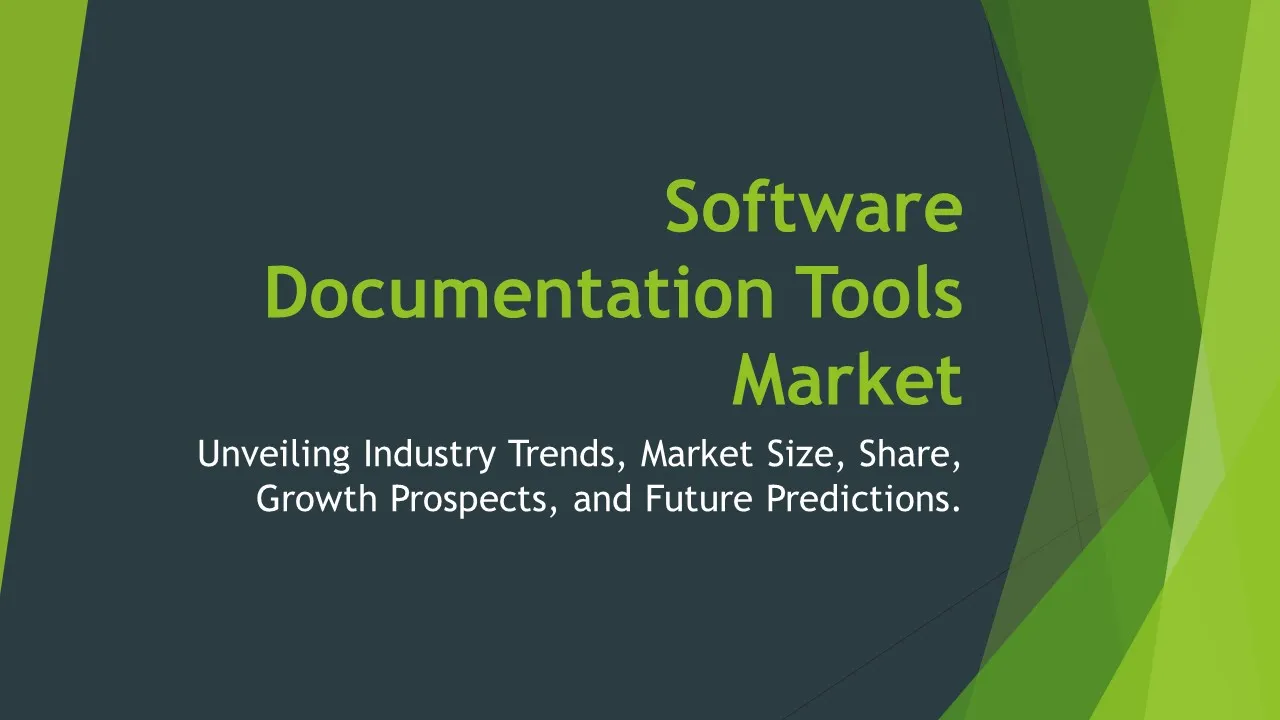Visual AI Analysis
Visual AI Analysis Market Segments - by Component (Software, Hardware), Technology (Computer Vision, Machine Learning, Natural Language Processing), Application (Automotive, Healthcare, Retail, Security and Surveillance, Others), Vertical (BFSI, IT and Telecom, Healthcare, Retail, Others), and Region (North America, Europe, Asia Pacific, Latin America, Middle East & Africa) - Global Industry Analysis, Growth, Share, Size, Trends, and Forecast 2025-2035
- Report Preview
- Table Of Content
- Segments
- Methodology
Visual AI Analysis Market Outlook
The global Visual AI Analysis market is projected to reach approximately USD 45 billion by 2035, with an impressive compound annual growth rate (CAGR) of 25% during the forecast period of 2025 to 2035. This rapid growth is primarily driven by the increasing demand for automation and intelligent solutions across various industries, resulting in enhanced productivity and efficiency. The proliferation of big data and the need for advanced analytics have further accelerated the adoption of Visual AI technologies. Additionally, the rise in the use of smart devices and connected technologies has opened new avenues for Visual AI applications, thereby expanding the market landscape. As businesses continue to invest in digital transformation initiatives, the Visual AI Analysis market is poised for significant expansion in the coming years.
Growth Factor of the Market
Several critical factors are contributing significantly to the growth of the Visual AI Analysis market. Firstly, the increasing application of AI technologies in sectors such as healthcare and automotive is a major driving force, as organizations seek to improve decision-making and operational efficiencies. Secondly, advancements in deep learning techniques have made it possible for AI systems to process and analyze visual data with greater accuracy and speed than ever before, enhancing their utility in various applications. Furthermore, the growing emphasis on security and surveillance solutions in urban areas is propelling the demand for Visual AI technologies that enable real-time monitoring and threat detection. Thirdly, the rise of e-commerce and online retail is prompting businesses to adopt Visual AI tools for enhancing customer experience through personalized recommendations and visual search features. Lastly, increasing investments by both private and public sectors into AI research and development are fostering innovation and driving market growth.
Key Highlights of the Market
- The Visual AI Analysis market is expected to witness a CAGR of 25% from 2025 to 2035.
- Healthcare and automotive sectors are leading adopters of Visual AI technologies.
- Real-time analytics and decision-making capabilities are becoming essential for businesses.
- Significant investments in AI research are driving technological advancements in the market.
- Growing demand for personalized customer experiences through visual analytics is boosting market growth.
By Component
Software:
The software segment is a pivotal part of the Visual AI Analysis market, comprising tools and applications that enable the analysis and interpretation of visual data. This includes algorithms for image processing, pattern recognition, and data visualization. As businesses increasingly rely on software solutions for extracting insights from image and video data, the demand for advanced software tools is surging. Various industries, including healthcare, automotive, and retail, are utilizing software for applications such as patient monitoring, driver assistance systems, and customer engagement analytics, respectively. The flexibility and scalability offered by software solutions are essential for organizations striving to integrate Visual AI capabilities into their existing systems. Furthermore, ongoing advancements in cloud-based software solutions are enhancing accessibility, allowing organizations of all sizes to benefit from Visual AI technologies without significant infrastructure investments.
Hardware:
The hardware segment of the Visual AI Analysis market includes the physical devices and equipment necessary for executing visual analysis applications, such as cameras, sensors, and processing units. As the demand for high-performance visual analytics solutions continues to grow, the need for advanced hardware that can support these applications is becoming increasingly critical. For instance, the development of sophisticated imaging sensors and processing chips is enabling real-time data capture and analysis in various settings. Moreover, the Internet of Things (IoT) is facilitating the integration of Visual AI technologies into a wide array of devices, making it essential for hardware manufacturers to innovate and offer cutting-edge products. Additionally, the proliferation of edge computing is pushing the demand for specialized hardware that can perform visual AI tasks closer to the data source, enhancing response times and reducing latency.
By Technology
Computer Vision:
Computer Vision technology is a cornerstone of the Visual AI Analysis market, enabling machines to interpret and understand visual information from the world. This technology encompasses various processes, including image recognition, object detection, and image analysis. Computer Vision is widely applied across numerous sectors, such as manufacturing, where it is utilized for quality control and defect detection. In the retail industry, Computer Vision applications enhance customer experience through automated checkouts and personalized marketing strategies. As algorithms become more sophisticated and data availability increases, the accuracy and efficiency of Computer Vision systems are continually improving, leading to broader adoption and innovative use cases. The integration of Computer Vision with other technologies like augmented reality (AR) is also creating new opportunities for immersive user experiences.
Machine Learning:
Machine Learning is a pivotal technology underpinning the capabilities of Visual AI Analysis, enabling systems to learn from data and improve their performance over time. By employing algorithms that analyze visual data patterns, Machine Learning enhances the accuracy of predictions and decisions made by Visual AI applications. This technology is particularly impactful in sectors such as healthcare, where it assists in diagnosing diseases from imaging data and predicting patient outcomes based on historical data. As Machine Learning models become more robust and versatile, organizations are increasingly leveraging them to optimize operations, enhance security measures, and improve customer engagement strategies. Continuous advancements in deep learning techniques are also facilitating the development of more sophisticated Machine Learning applications within the Visual AI domain, further driving market growth.
Natural Language Processing:
Natural Language Processing (NLP) plays a significant role in augmenting Visual AI Analysis by enabling systems to interpret and manipulate human language in conjunction with visual data. This technology is essential for applications that require the integration of text and visual inputs, such as chatbots that can analyze images and respond accordingly. In industries like retail and e-commerce, NLP facilitates enhanced customer interactions through visual search capabilities that combine image data with textual queries, improving user experience significantly. As NLP technologies continue to evolve, they are becoming increasingly adept at understanding context and nuances, leading to more intelligent and responsive Visual AI applications. This integration of NLP with Visual AI is paving the way for innovative solutions that can streamline workflows and enhance decision-making across various sectors.
By Application
Automotive:
The automotive sector is a significant application area for Visual AI Analysis, utilizing advanced visual technologies for various purposes, including autonomous driving and advanced driver-assistance systems (ADAS). Visual AI enables vehicles to interpret their surroundings through real-time image analysis from cameras and sensors, enhancing safety and navigation capabilities. The increasing focus on reducing accidents and improving traffic management is driving the adoption of Visual AI solutions in this industry. Moreover, manufacturers are leveraging these technologies to gather actionable insights from vehicle data, which can be used to optimize design and performance. With ongoing advancements in AI technologies, the automotive sector is likely to witness further integration of Visual AI, leading to smarter and safer vehicles on the road.
Healthcare:
In the healthcare sector, Visual AI Analysis is revolutionizing patient care and diagnostics by enabling medical professionals to analyze imaging data with unprecedented accuracy. Technologies such as image recognition and pattern detection are being employed to identify diseases from X-rays, MRIs, and CT scans, facilitating quicker and more accurate diagnoses. Visual AI is also enhancing surgical procedures through augmented reality applications that provide surgeons with real-time visual data overlays, improving precision and outcomes. As the healthcare industry increasingly adopts telemedicine and remote patient monitoring, the integration of Visual AI solutions allows for continuous patient assessment and timely interventions, thereby improving overall healthcare delivery and patient outcomes.
Retail:
Retail is another prominent application area for Visual AI Analysis, leveraging visual technologies to enhance customer experience and operational efficiency. Retailers are utilizing Visual AI for tasks such as inventory management, customer behavior analysis, and personalized marketing. Through the deployment of computer vision systems, businesses can track customer movements within stores, gaining insights into shopping patterns and preferences. This data can then be used to optimize store layouts and marketing strategies, ultimately driving sales. Additionally, visual search capabilities enable customers to find products quickly, further enhancing their shopping experience. As competition in the retail sector intensifies, the adoption of Visual AI technologies is becoming a critical differentiator for businesses seeking to engage customers effectively and streamline operations.
Security and Surveillance:
The security and surveillance segment is witnessing significant growth due to the rising need for effective monitoring solutions in both public and private spaces. Visual AI technologies enable real-time analysis of video feeds, allowing for the automatic detection of unusual behavior, security breaches, or potential threats. By integrating AI-powered analytics into surveillance systems, organizations can improve their response times and enhance overall safety. These technologies are increasingly being deployed in urban areas, transportation hubs, and large venues to ensure public safety. Furthermore, the advent of smart city initiatives and IoT is driving the demand for advanced security solutions that leverage Visual AI for comprehensive monitoring and threat assessment.
By Vertical
BFSI:
The Banking, Financial Services, and Insurance (BFSI) vertical is increasingly adopting Visual AI technologies to enhance security protocols and improve customer service. Through the use of biometric identification methods and facial recognition, financial institutions can streamline authentication processes, thereby reducing fraud and improving operational security. Additionally, Visual AI tools enable organizations to analyze customer behavior and preferences, allowing for more personalized service offerings. This sector is also utilizing visual analytics for risk assessment and credit scoring, enhancing decision-making processes. As cyber threats continue to evolve, the integration of Visual AI technologies will become essential for safeguarding sensitive financial data and providing secure transactions.
IT and Telecom:
In the IT and Telecom sector, Visual AI Analysis is playing a crucial role in optimizing network performance and enhancing customer experience. Companies are employing visual analytics to monitor network traffic and detect anomalies in real-time, enabling swift responses to potential threats or outages. Moreover, Visual AI technologies facilitate customer support solutions, such as visual troubleshooting guides and augmented reality applications that enhance user interaction with telecom services. By leveraging visual data analytics, organizations in this sector can make informed decisions regarding infrastructure investments and service enhancements, ultimately driving customer satisfaction and operational efficiency.
Healthcare:
The healthcare vertical is seeing a transformative impact from Visual AI Analysis, as medical institutions increasingly harness visual technologies for diagnostic and operational purposes. Beyond traditional imaging methods, AI-driven visual analytics are being utilized for patient monitoring and predictive analytics, allowing healthcare providers to identify potential health risks early. Additionally, Visual AI aids in the development of personalized treatment plans by analyzing patient data in conjunction with visual inputs from medical imaging. As the demand for high-quality healthcare continues to rise, the integration of Visual AI will be pivotal in improving patient outcomes and operational efficiencies within the healthcare system.
Retail:
The retail vertical is leveraging Visual AI Analysis to redefine customer interactions and optimize inventory management. By deploying computer vision systems in stores, retailers can gain valuable insights into customer behavior, product placement effectiveness, and sales trends. This information can be utilized to tailor marketing strategies and enhance the overall shopping experience. Additionally, Visual AI technologies are facilitating streamlined supply chain operations by providing real-time inventory tracking and demand forecasting capabilities. As the retail landscape continues to evolve, companies that effectively integrate Visual AI solutions will be well-positioned to meet consumer expectations and drive sales growth.
By Region
The North American region dominates the Visual AI Analysis market, accounting for approximately 40% of the total market share in 2025. This leadership position is attributed to the presence of a robust technology infrastructure, significant investments in AI research and development, and the early adoption of Visual AI technologies across various sectors, including healthcare and automotive. The region is also home to some of the largest technology firms and startups innovating in the field of Visual AI, which further bolsters market growth. As consumer demand for advanced analytics and intelligent solutions rises, North America is expected to maintain its leading position throughout the forecast period with a healthy CAGR of 27%.
In Europe, the Visual AI Analysis market is projected to experience substantial growth, driven by increasing regulatory support for AI technologies and the rapid digital transformation across industries. European countries are actively investing in AI initiatives to enhance competitiveness and drive innovation. The region is anticipated to witness a CAGR of 24% from 2025 to 2035 as organizations in sectors such as retail, healthcare, and security increasingly adopt Visual AI solutions. The Asia Pacific region is also emerging as a critical market for Visual AI Analysis, with projected growth fueled by the expansion of urban infrastructure and increasing investments in technology, particularly in countries like China and India, where rapid economic growth is spurring demand for advanced AI applications.
Opportunities
As the Visual AI Analysis market continues to expand, numerous opportunities are emerging for businesses and technology providers. One of the most significant opportunities lies in the integration of Visual AI with emerging technologies such as augmented reality (AR) and virtual reality (VR). This integration has the potential to create immersive user experiences across various sectors, from gaming and entertainment to education and training. Companies that can innovate and create compelling use cases leveraging Visual AI in conjunction with AR and VR will likely capture significant market attention and investment. Additionally, the growing trend of automation in industries such as manufacturing and logistics presents an opportunity for Visual AI to optimize processes, improve efficiency, and enhance safety by providing real-time visual feedback and analytics.
Furthermore, the increasing emphasis on data privacy and security opens doors for Visual AI technologies that enhance surveillance and monitoring capabilities. Organizations are becoming more vigilant in ensuring compliance with regulatory frameworks, and technologies that can provide real-time analytics for security applications will be in high demand. Additionally, the rise of e-commerce and the need for personalized shopping experiences are propelling demand for Visual AI solutions that improve customer engagement and streamline operational processes. Companies investing in developing tailored Visual AI applications that cater to the needs of specific industries will benefit from increased demand and potentially secure a competitive advantage in the market.
Threats
Despite the numerous opportunities available, the Visual AI Analysis market faces several threats that could hinder its growth trajectory. One of the primary concerns is the rapid pace of technological change, which can render existing solutions obsolete if companies fail to innovate and adapt. The competitive landscape is characterized by constant advancements and emerging players, making it essential for organizations to remain agile and responsive to market trends. Additionally, the increasing concerns around data privacy and ethical considerations regarding AI usage pose significant challenges. Regulations and compliance requirements may impact the deployment of Visual AI technologies, especially in sensitive sectors such as healthcare and finance, where data security is paramount.
Moreover, the reliance on high-quality data for effective Visual AI applications raises concerns regarding data availability and quality. Organizations must ensure they have access to diverse, high-quality datasets to train their AI systems effectively. In industries where data is scarce or unstructured, developing reliable Visual AI solutions can be particularly challenging. Lastly, the potential for biases in AI algorithms can lead to unfair or inaccurate outcomes, raising ethical concerns and affecting public trust. Organizations must prioritize transparency and fairness in their AI strategies to mitigate these risks and maintain credibility in the market.
Competitor Outlook
- IBM
- Microsoft
- Google Cloud
- Amazon Web Services
- Intel Corporation
- Siemens
- Hewlett Packard Enterprise
- NVIDIA Corporation
- Qualcomm Incorporated
- Oracle Corporation
- Salesforce
- C3.ai
- Zoho Corporation
- Palantir Technologies
- Samsung Electronics
The competitive landscape of the Visual AI Analysis market is characterized by a diverse range of players, including established tech giants and emerging startups. Major companies such as IBM, Microsoft, and Google Cloud are leveraging their extensive resources and expertise in AI and machine learning to develop comprehensive Visual AI solutions. These organizations are investing heavily in research and development to foster innovation and enhance their offerings, aiming to capture significant market share in various application areas. Additionally, partnerships and collaborations among companies are becoming increasingly common as they seek to combine their strengths and offer integrated solutions that meet the evolving demands of customers.
Emerging players in the Visual AI Analysis market are also contributing to the competitive landscape by introducing niche products and services tailored to specific industry needs. Startups in the AI space are focusing on disruptive technologies and agile development processes to deliver innovative solutions that challenge traditional providers. This influx of new entrants is intensifying competition and driving advancements in Visual AI technologies. Companies that can effectively differentiate themselves through unique value propositions and superior customer experiences are likely to thrive in this dynamic market environment.
Some notable companies, such as NVIDIA and Intel, are making significant strides in hardware development to support Visual AI applications. NVIDIA, for instance, has established itself as a leader in GPU technology, which is critical for processing the large volumes of visual data required for AI analysis. Intel is also investing in specialized chips and hardware solutions designed to enhance the performance of Visual AI systems. As the demand for high-performance processing capabilities continues to rise, these companies are well-positioned to capitalize on the growth of the Visual AI Analysis market.
1 Appendix
- 1.1 List of Tables
- 1.2 List of Figures
2 Introduction
- 2.1 Market Definition
- 2.2 Scope of the Report
- 2.3 Study Assumptions
- 2.4 Base Currency & Forecast Periods
3 Market Dynamics
- 3.1 Market Growth Factors
- 3.2 Economic & Global Events
- 3.3 Innovation Trends
- 3.4 Supply Chain Analysis
4 Consumer Behavior
- 4.1 Market Trends
- 4.2 Pricing Analysis
- 4.3 Buyer Insights
5 Key Player Profiles
- 5.1 IBM
- 5.1.1 Business Overview
- 5.1.2 Products & Services
- 5.1.3 Financials
- 5.1.4 Recent Developments
- 5.1.5 SWOT Analysis
- 5.2 C3.ai
- 5.2.1 Business Overview
- 5.2.2 Products & Services
- 5.2.3 Financials
- 5.2.4 Recent Developments
- 5.2.5 SWOT Analysis
- 5.3 Siemens
- 5.3.1 Business Overview
- 5.3.2 Products & Services
- 5.3.3 Financials
- 5.3.4 Recent Developments
- 5.3.5 SWOT Analysis
- 5.4 Microsoft
- 5.4.1 Business Overview
- 5.4.2 Products & Services
- 5.4.3 Financials
- 5.4.4 Recent Developments
- 5.4.5 SWOT Analysis
- 5.5 Salesforce
- 5.5.1 Business Overview
- 5.5.2 Products & Services
- 5.5.3 Financials
- 5.5.4 Recent Developments
- 5.5.5 SWOT Analysis
- 5.6 Google Cloud
- 5.6.1 Business Overview
- 5.6.2 Products & Services
- 5.6.3 Financials
- 5.6.4 Recent Developments
- 5.6.5 SWOT Analysis
- 5.7 Zoho Corporation
- 5.7.1 Business Overview
- 5.7.2 Products & Services
- 5.7.3 Financials
- 5.7.4 Recent Developments
- 5.7.5 SWOT Analysis
- 5.8 Intel Corporation
- 5.8.1 Business Overview
- 5.8.2 Products & Services
- 5.8.3 Financials
- 5.8.4 Recent Developments
- 5.8.5 SWOT Analysis
- 5.9 NVIDIA Corporation
- 5.9.1 Business Overview
- 5.9.2 Products & Services
- 5.9.3 Financials
- 5.9.4 Recent Developments
- 5.9.5 SWOT Analysis
- 5.10 Oracle Corporation
- 5.10.1 Business Overview
- 5.10.2 Products & Services
- 5.10.3 Financials
- 5.10.4 Recent Developments
- 5.10.5 SWOT Analysis
- 5.11 Amazon Web Services
- 5.11.1 Business Overview
- 5.11.2 Products & Services
- 5.11.3 Financials
- 5.11.4 Recent Developments
- 5.11.5 SWOT Analysis
- 5.12 Samsung Electronics
- 5.12.1 Business Overview
- 5.12.2 Products & Services
- 5.12.3 Financials
- 5.12.4 Recent Developments
- 5.12.5 SWOT Analysis
- 5.13 Palantir Technologies
- 5.13.1 Business Overview
- 5.13.2 Products & Services
- 5.13.3 Financials
- 5.13.4 Recent Developments
- 5.13.5 SWOT Analysis
- 5.14 Qualcomm Incorporated
- 5.14.1 Business Overview
- 5.14.2 Products & Services
- 5.14.3 Financials
- 5.14.4 Recent Developments
- 5.14.5 SWOT Analysis
- 5.15 Hewlett Packard Enterprise
- 5.15.1 Business Overview
- 5.15.2 Products & Services
- 5.15.3 Financials
- 5.15.4 Recent Developments
- 5.15.5 SWOT Analysis
- 5.1 IBM
6 Market Segmentation
- 6.1 Visual AI Analysis Market, By Component
- 6.1.1 Software
- 6.1.2 Hardware
- 6.2 Visual AI Analysis Market, By Technology
- 6.2.1 Computer Vision
- 6.2.2 Machine Learning
- 6.2.3 Natural Language Processing
- 6.3 Visual AI Analysis Market, By Application
- 6.3.1 Automotive
- 6.3.2 Healthcare
- 6.3.3 Retail
- 6.3.4 Security and Surveillance
- 6.3.5 Others
- 6.1 Visual AI Analysis Market, By Component
7 Competitive Analysis
- 7.1 Key Player Comparison
- 7.2 Market Share Analysis
- 7.3 Investment Trends
- 7.4 SWOT Analysis
8 Research Methodology
- 8.1 Analysis Design
- 8.2 Research Phases
- 8.3 Study Timeline
9 Future Market Outlook
- 9.1 Growth Forecast
- 9.2 Market Evolution
10 Geographical Overview
- 10.1 Europe - Market Analysis
- 10.1.1 By Country
- 10.1.1.1 UK
- 10.1.1.2 France
- 10.1.1.3 Germany
- 10.1.1.4 Spain
- 10.1.1.5 Italy
- 10.1.1 By Country
- 10.2 Asia Pacific - Market Analysis
- 10.2.1 By Country
- 10.2.1.1 India
- 10.2.1.2 China
- 10.2.1.3 Japan
- 10.2.1.4 South Korea
- 10.2.1 By Country
- 10.3 Latin America - Market Analysis
- 10.3.1 By Country
- 10.3.1.1 Brazil
- 10.3.1.2 Argentina
- 10.3.1.3 Mexico
- 10.3.1 By Country
- 10.4 North America - Market Analysis
- 10.4.1 By Country
- 10.4.1.1 USA
- 10.4.1.2 Canada
- 10.4.1 By Country
- 10.5 Visual AI Analysis Market by Region
- 10.6 Middle East & Africa - Market Analysis
- 10.6.1 By Country
- 10.6.1.1 Middle East
- 10.6.1.2 Africa
- 10.6.1 By Country
- 10.1 Europe - Market Analysis
11 Global Economic Factors
- 11.1 Inflation Impact
- 11.2 Trade Policies
12 Technology & Innovation
- 12.1 Emerging Technologies
- 12.2 AI & Digital Trends
- 12.3 Patent Research
13 Investment & Market Growth
- 13.1 Funding Trends
- 13.2 Future Market Projections
14 Market Overview & Key Insights
- 14.1 Executive Summary
- 14.2 Key Trends
- 14.3 Market Challenges
- 14.4 Regulatory Landscape
Segments Analyzed in the Report
The global Visual AI Analysis market is categorized based on
By Component
- Software
- Hardware
By Technology
- Computer Vision
- Machine Learning
- Natural Language Processing
By Application
- Automotive
- Healthcare
- Retail
- Security and Surveillance
- Others
By Region
- North America
- Europe
- Asia Pacific
- Latin America
- Middle East & Africa
Key Players
- IBM
- Microsoft
- Google Cloud
- Amazon Web Services
- Intel Corporation
- Siemens
- Hewlett Packard Enterprise
- NVIDIA Corporation
- Qualcomm Incorporated
- Oracle Corporation
- Salesforce
- C3.ai
- Zoho Corporation
- Palantir Technologies
- Samsung Electronics
- Publish Date : Jan 21 ,2025
- Report ID : IT-68650
- No. Of Pages : 100
- Format : |
- Ratings : 4.5 (110 Reviews)








